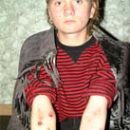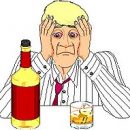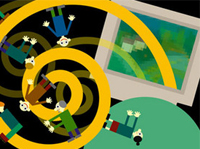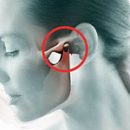Given the greater social significance of alcoholism, there is a sufficiently large number of approaches to solving this problem. Conditionally, all methods of treating alcoholism can be divided into two large groups: medical and biological and psychological.
Content
Methods of two groups
Methods first group They proceed from the fact that the basis of all deviations during alcohol dependence is a violation of certain brain departments. Consequently, drug (biological, chemical) effect on the activity of the brain becomes priority. Methods second group based on the idea of alcoholism as a person deformation. The priority is given to psychological correction and psychological therapy of alcohol dependence. The basic principles of therapy of alcoholism in Russian narcologically are considered:
Under voluntariness implies a conscious inclusion of patients with rehabilitation programs that meet the provisions on «informed consent». Against the desires of the patient, alcoholism can be cured, it is necessary to actively participate a person in the process of combating dependence. The practice of applying forced treatment in the USSR showed that this measure is more punitive than therapeutic and prophylactic.
The complexity of therapy dictates the need for use in the process of treatment and rehabilitation, all the variety of scientifically based methods of treatment of alcoholism. Most often is a combination of methods from the first and second groups.
Maximum individualization implies a creative approach to each individual case, accounting for additional examination and history (both disease and life). Need to choose exactly for each patient «Therapeutic targets» Anti-alcohol treatment.
MEDICAL BIOLOGICAL METHODS
This group, in turn, can be divided into two: drugs for the blockade of alcohol dependence and supporting (auxiliary) preparations.
Depending blockers - This, of course, basic medicines. They can act two different ways.
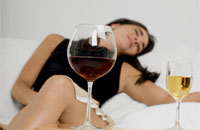 The first path, older: Education with alcohol of toxic compounds causing a sharply pronounced reaction reaction. Activities acts as a disulfram. Commercial names in drugs containing disulfiram, a lot, but the most famous espearl, teturas, antabus, lidewin. These drugs are meant when they say that man «Easy» from alcohol. «Bearing» - This is an intramuscular injection of a disulfiram solution, which is solved long enough, providing a constant concentration of the active substance in the blood. Disulfiram blocks aldehydehydrogenase - the second enzyme in ethyl alcohol metabolism. This leads to a sharp accumulation in the blood of the product of the first stage of alcohol transformation - acetic aldehyde. The substance is several times toxic than ethanol and causes blood tides to face, nausea, vomiting, general ailment, tachycardia, sharp blood pressure drops. Receiving alcohol against the background of disulfiram can also cause much more serious complications - collapse, heart rate disorders, attacks of angina, myocardial infarction, brain swelling. In this case, the drug acts on the principle of forming a negative conventional reflex, plus there is a psychological component - fear of death. According to a similar principle, Torpedo, Nit, Sit and Mst.
The first path, older: Education with alcohol of toxic compounds causing a sharply pronounced reaction reaction. Activities acts as a disulfram. Commercial names in drugs containing disulfiram, a lot, but the most famous espearl, teturas, antabus, lidewin. These drugs are meant when they say that man «Easy» from alcohol. «Bearing» - This is an intramuscular injection of a disulfiram solution, which is solved long enough, providing a constant concentration of the active substance in the blood. Disulfiram blocks aldehydehydrogenase - the second enzyme in ethyl alcohol metabolism. This leads to a sharp accumulation in the blood of the product of the first stage of alcohol transformation - acetic aldehyde. The substance is several times toxic than ethanol and causes blood tides to face, nausea, vomiting, general ailment, tachycardia, sharp blood pressure drops. Receiving alcohol against the background of disulfiram can also cause much more serious complications - collapse, heart rate disorders, attacks of angina, myocardial infarction, brain swelling. In this case, the drug acts on the principle of forming a negative conventional reflex, plus there is a psychological component - fear of death. According to a similar principle, Torpedo, Nit, Sit and Mst.
The second way is more modern, the drugs on the basis of which are distributed in the past few years. Active substances of such drugs affect the so-called «System encouragement» brain, affect the system of neurotransmitters, which are responsible for the formation of positive emotions and other «Encouraging» Alcohol reactions. Such medicines are becoming more and more. Here are the most popular, permitted for use in the Russian Federation: Average urgent (usually up to 1 year) Aktoplex and algorithm, as well as preparations of prolonged action Vitamerts-Depot and Aquilong.
Supporting drugs. Antidepressants (amitriptyline, Melipramine, Lerivon, Lyuromil, Coaxil), Neuroleptics (EGLONIL and carbidin), anticonvulsant (Finlepsin and Convalex), tranquilizers (Grandaxin and Mebikarb) are used as supportive therapy.
The choice of the main drug and maintenance therapy should be carried out only by a narcologist who owns full information about this particular patient. Sometimes after the start of therapy, its correction is required, so constant contact with the attending physician is a prerequisite for success.
Psychotherapy
Several aspects can be distinguished: the emphasis is done, firstly, on an individual or group (including family) perspectives, and secondly, on how: advisory, correctional (training) or persistent («coding»). The main target of psychological impact when working with alcoholism patients are psychophysiological dependence on alcohol, attraction to the use of alcohol.
Individual techniques. Of the individual methods of psychotherapy of alcoholism, the method of suggestive impact is most common. It is about patients who passed the treatment of alcoholism precisely by this method, often consumed «Encoded». Main form - Emotional-stressful psychotherapy, locking in the subconscious «Coda», prohibiting alcohol consumption. «Code» can be installed both directly and indirectly.
By virtue of the features of alcoholism, it turns out exactly the mediated «coding». The basis of the method is a complex of prohibitive measures aimed at developing a patient for the concerns of inevitable severe health disorders in the event of a return to the use of alcoholic beverages.
The founder of emotionally stressful therapy in the treatment of alcoholism is considered. Dovzhenko, with which, first of all, the phrases are associated «Alcohol coding» or «Alcohol encoding». Modern drug abology went further, and now a significantly improved and modified technique A. Dovzhenko, and these modifications are so diverse, which allows you to find an approach to almost every, even a very difficult patient.
Sometimes «coding» Expand due to the use of physiotherapy methods. For example, brain photostimulation. Such a technique received cubization of cerebrosphotopprogramming (CFI).
Group psychotherapy, Using the phenomenon of group pressure, is considered one of the most common psychological approaches to the imposition of alcohol dependence. Group psychotherapy has significant opportunities to overcome the denial of alcohol problems (alcohol anosognosia), permits or weakening of intrapersonal conflicts and difficulties of interpersonal interaction.
It is believed that the effectiveness of group psychotherapy is largely determined by the personal and professional position of the psychotherapist. The behavior and emotional manifestations of the leading group are a model, on the basis of which the relationship between patients with alcoholism in the group is being built. Optimal tactics It is customary to consider non-viewing, supporting behavior with manual elements. The doctor cannot offer to patients ready-made solutions.
The most famous application of the group method is society «Anonymous alcoholics», which is very widely represented in the United States and Canada, and also gradually conquers its followers and in Russia.
Family psychotherapy Alcohol addiction is based on the basis of conviction that the formation of alcoholism is a family problem. It is aimed at developing among members of the families of alcoholics of the right attitude towards the disease and the treatment of the patient, the weakening of neurotic symptoms in them, the change in the intra-family interaction system. An important task of family psychotherapy for alcoholism is to analyze and destroy the pathological and manipulative relations of patients with alcoholism with their closest relatives (elimination of television).

